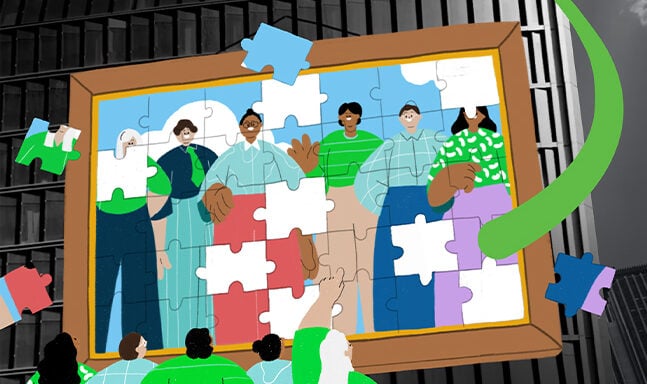People & Leadership
Employee Appreciation Day: How to build a culture of year-round recognition
Employee appreciation shouldn’t just be one day a year. See how you can drive employee recognition all year round.

How do you show your employees you appreciate them?
Every year, the first Friday in March marks Employee Appreciation Day.
Obviously, appreciating your employees on only one day of the year is not something we advocate – you should be valuing and recognising your people all year round – but the day is a good opportunity to take stock and look at what your company is doing to appreciate its staff.
Here’s what we cover in this article:
- Could you be doing better?
- Why does recognition matter?
- What kind of appreciation do employees actually want?
- Why it should be Employee Appreciation Day every day
Could you be doing better?
Employee recognition can mean the difference in an employee staying or leaving a company.
In fact, employees who are recognised for their jobs are six more times likely to stay than those who aren’t recognised.
And yet 29% of employees haven’t received recognition for good work in more than a year, according to recent research.
Why does recognition matter?
Recognising employees helps drive engagement and boosts morale, which in turn increases productivity. That’s vital when productivity levels have been low for years.
Appreciation is also a fundamental human need. It falls under the fourth level of Maslow’s hierarchy of needs – self-esteem. It’s a degree of self-respect and respect from others which includes recognition, attention and appreciation.
With engagement levels reportedly at an all-time low, building a culture of appreciation in your company is not only the right thing to do but also a smart business move.
What kind of appreciation do employees actually want?
According to Gallup, the most effective recognition is honest, authentic and individualised to how each employee wants to be recognised.
The key is to know what makes it meaningful and memorable for the employee, and who is doing the recognising.
Some ways you can recognise employees are:
- Public recognition or acknowledgment
- Private recognition from a manager, peer or customer
- Receiving or obtaining a high level of achievement through performance reviews
- Promotion or increase in scope of work or responsibility to show trust
- Monetary reward.
So, who’s going the extra mile and showing employees recognition all year-round? And how are they doing it?
Here’s an example of employee appreciation at its best to help fuel some ideas of your own…
Salesforce relies on tech for successful employee recognition
Customer relationship management company Salesforce shows us that when it comes to employee recognition, sometimes the simplest ways are the best.
Salesforce use communications tool Slack for peer-to-peer recognition. It uses it to share when a colleague has done a good job.
It has badges for certain types of recognition that are displayed on peoples’ profiles on Slack and custom badges are also made for colleagues who have made a big difference.
This is something that everyone can get involved in, no matter where they work. 90% of Salesforce employees say they love where they work, so it might be simple but it’s effective.
Why it should be Employee Appreciation Day every day
Employee appreciation shouldn’t be just a day. Empowering your people needs to be constant to drive great experiences throughout the year.
However, Employee Appreciation Day can still be embraced as a way to shout about how your people can appreciate one another all year round.
You could share the latest benefits that have gone live that recognise your people for the job they do, or task your employees to share at least one piece of positive feedback to another colleague to start embedding a culture of recognition throughout the workplace.
83% of HR leaders told us in our recent research that employee experiences will be an even bigger focus for them.
So if employee experiences is a top focus for you also, then employee appreciation throughout the year needs to play a vital role in that, too.
Editor’s note: This article was first published in February 2022 and has been updated for relevance.








Ask the author a question or share your advice